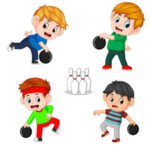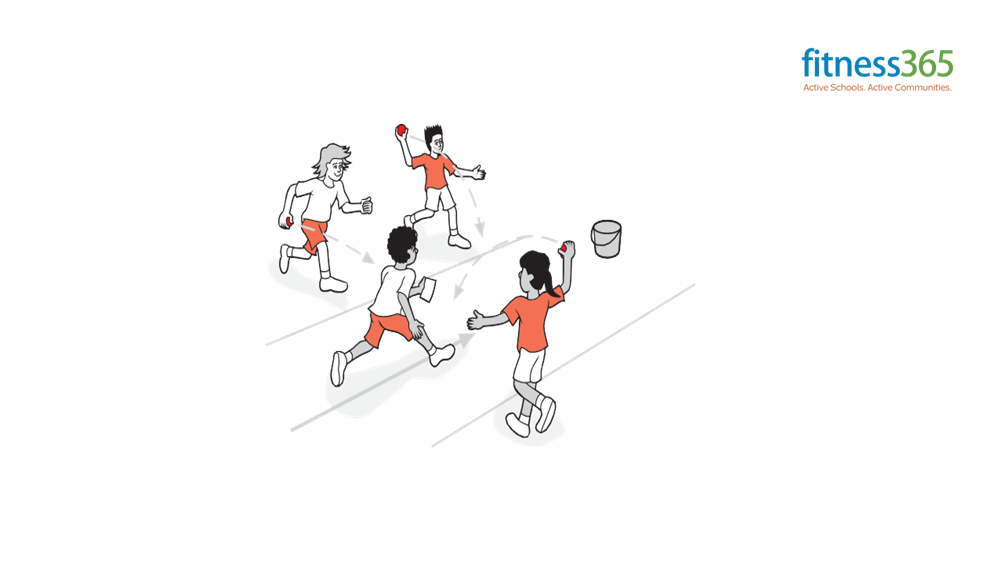
by Neetu | May 29, 2020 | Fitness Activity
Movement skills/concepts
Running, leaping, jumping, throwing, and evading a throw.
Set-up
- Small, soft foam balls (computer viruses), an envelope containing ‘email’ message, and bucket (computer screen) at the far end of a defined grass or hard surface area.
- Two teams of four or more: the email team with the envelope, and the computer virus team, with a ball each.
- The computer virus team begins the game lined up on either side of the area.
Activity
The object of the game is for the email team to get the email message (in the envelope) to the computer screen (bucket). One member of the email team starts to run through the area to deliver the message, while the computer virus team aims to hit the runner below the waist with the balls. If the runner is hit, they must stand frozen on the spot. The next runner then tries to get the email through.
- quick moves
- dodging and faking
Variations
Change scenario: Use a Pirates of the Caribbean scenario – pirates try to steal the treasure while the guardians of the treasure try to stop them; or Shrek – Shrek must save Princess Fiona from the fiery dragons.

by Neetu | May 29, 2020 | Fitness Activity
Movement skills/concepts
Jumping for distance, in varying directions and levels, creative ways, and with others.
Set-up
Children are spread out in a defined grass or hard surface area.
Activity
Who can jump …? (or Can you jump …?)
- as quietly/loudly as possible
- forwards/backward
- from a small crouch
- very fast/slow
- in a straight line
- like a giant/frog
- as if you are on ice
- making a circle
- with a partner
- with legs and arms stiff
- keeping your arms out from your side
- with your legs apart
- and land with your feet apart
Variations
Add stationary objects: Can you jump … over a box, across a rope, through a hoop?
Combine actions: Can you jump quietly while making an ‘O’ shape?
Jump your own height: Measure your height on the ground using a marker. Try jumping in different ways to reach your height.
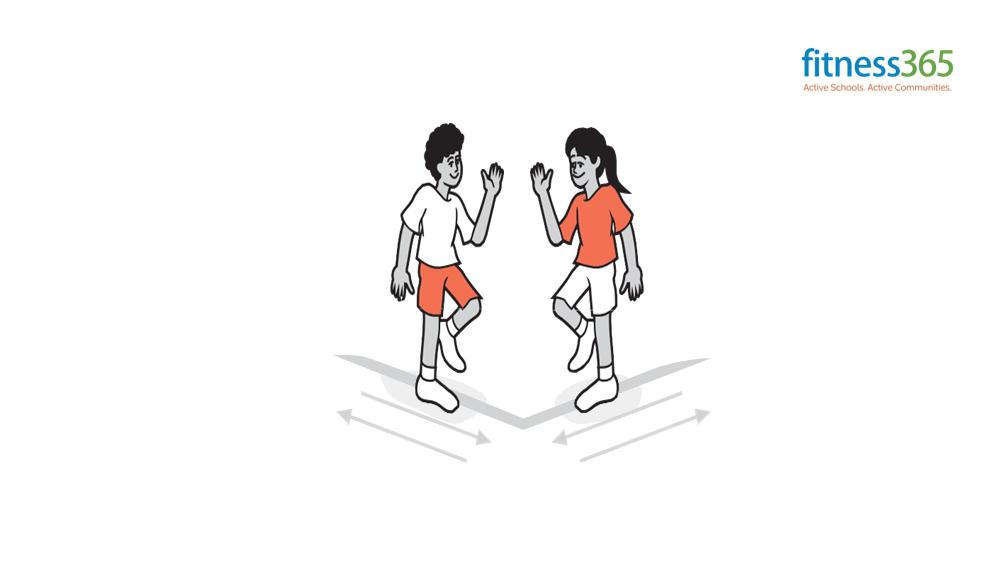
by Neetu | May 29, 2020 | Fitness Activity
Movement skills/concepts
Walking to different rhythms, walking on the spot, along a line, changing direction, and relationships (with others).
Set-up
Hard or grass area with lines or markings, rhythm instrument(s). Children stand scattered along a line.
Activity
Children walk on a line and change direction when they come to an intersection. When walking on a line they may meet up with someone coming towards them on the same line. If so, children walk on the spot and give partner a ‘high five’, turn and go back the way they came. Have different beats or rhythms to walk to.
Can you see …?
- pivoting on the ball of the foot when turning
- head up
- walking tall
- swinging arms waist high
Variations
Follow the leader: In pairs, one person (the leader) calls out commands, e.g. ‘Quick march’ (step out), ‘Mark time’ (march on the spot), ‘About turn’ (turn 180 degrees). Leaders are switched on ‘About turn’.
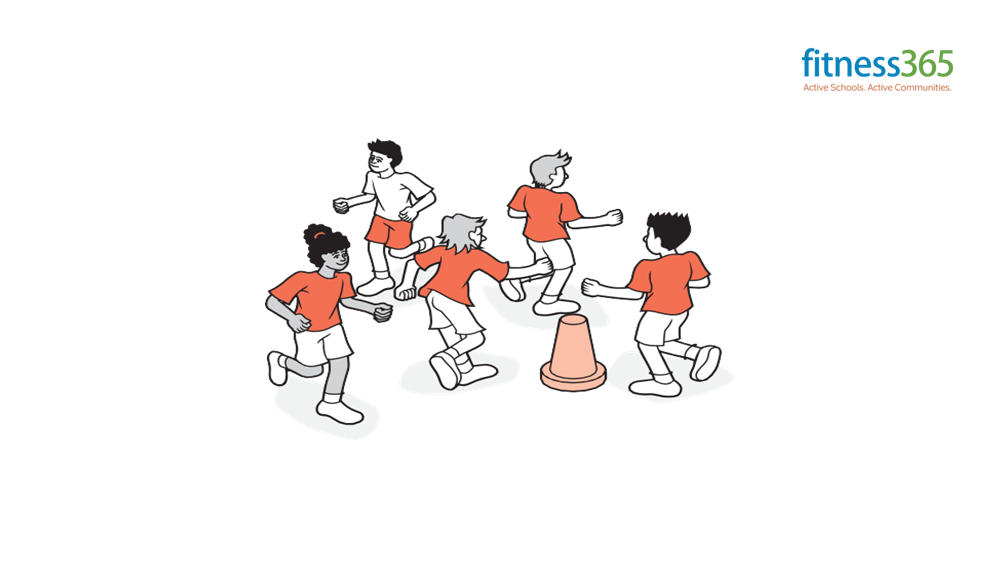
by Neetu | May 29, 2020 | Fitness Activity
Movement skills/concepts
Hopping through different pathways, levels, and qualities (e.g. fast, soft), and relationships (with equipment and partner).
Set-up
- Ropes, hoops, discs, cones.
- Children spread out in defined grass or hard surface area with equipment to hop over.
Activity
Children explore ways to hop.
Can you hop …?
- on the spot, forwards/backward/sideways
- and turn in the air
- and turn in the air making a quarter turn/half turn/full turn
- as quietly/noisily/quickly/slowly as you can
- as softly/hard as you can three times on your right/left foot
- alternating hard and soft landings
- over the rope, into the hoop, onto the disc, around the cones
- as high as you can, with little low hops, at a medium height
- as far as you can for distance
- without using your arms, using only one arm, using your opposite hopping foot
- alternating feet every eight/four/two beats
- with partners at the same time/moving forward holding hands/facing each other
Variations
Hopping tug of war: In pairs, children hold one of the partner’s hands and hold their non-hopping leg with their other hand, they then try to pull each other off-balance (no rough play).
Follow the leader: In small groups, one person leads the group, one behind the other, on a hopping journey over, on, and through obstacles.
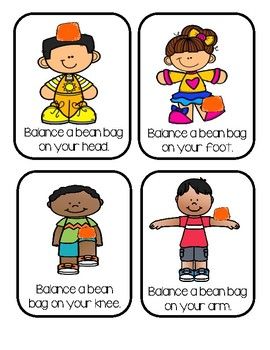
by Neetu | May 27, 2020 | Fitness Activity
Aim
- Experiment with different ways of tossing and then catching a bean bag with control
- Demonstrate underhand toss to hit a target with bean bag
Equipment Required
- Four cones for boundaries (same color).
- Spot marker for every kid.
- Music Player & pen drive.
- 1 bean bag per student.
Play Area Set-Up
Students scattered in the activity area, each with a bean bag.
Activity Description
Today we’re going to have fun exploring activities with Bean Bags. I will show you a movement activity and then you’ll repeat after me
With bean bag balancing on head, shoulders, or back:
- The balance on one foot. Shift to balance on the other foot.
- Sit and then stand again. If the beanbag falls, try again.
In plank position, slowly slide your feet around in a circle.
Wrap Up: (2 minutes)
What was the objective of your class? Can you tell me the shape of the beanbag? Color of beanbag?








